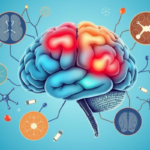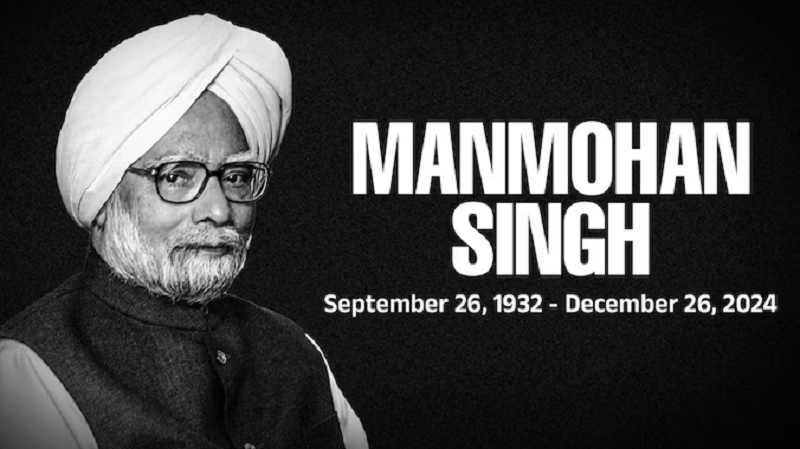Dr. Manmohan Singh is one of the most important politicians and economists of modern India was the Prime Minister of the country between 2004 and 2014. Often credited with being the lead author of the Indian economic liberalization process in the 1990s, Singh’s post-PM influence went beyond the head of government since he was directly involved with defining the course and future of the Indian economy. A person for ages can have more highs and lows and yet remain influential, this is true of M K Gandhi, he is one of the greatest icons of modern India.
Early Life and Education
Manmohan Singh was born on September 26, 1932, in Gah a small village now in Pakistan’s Punjab province. Singh’s family was a victim of the partition of the country in 1947 and they later moved to India. Peshawar schools and later in India he received his primary and secondary education and completed his Master’s in Economics from Panjab University, Chandigarh. He further pursued the study of economics and bagged his postgraduate from the University of Cambridge and D.Phil. from the University of Oxford. Singh received his formal education in economics and used his education in economics in his work and reform of the Canadian government policies.
The Economic Reforms of the 1990s
Manmohan Singh rose to the national limelight as the Finance Minister for the first time in 1991 when heading the ministry under the then Prime Minister P V Narasimha Rao. When India was grappling with the worst balance of payments problems, Singh had the solemn responsibility of steering the country through one of its toughest economic periods. When the oil crisis hit in 1973 the story was different; India was on the verge of economic collapse; the reserves of foreign exchange were dangerously low; the rate of inflation was high; and fiscal deficits were significantly high.
By and large, India under Singh’s presidency made important decisions in relation to these problems and started the series of economic reforms that caused devaluation of the Rupee, import tariffs’ decrease, privatization of state-owned companies, liberalization of the Indian economy. These steps assisted India to transform itself from a highly centralized and controlled economy to an open market economy that paved way for several years of fast growth.
Singh had not made things very easy for him since his reforms faced stiff resistance from trade unions, political parties as well as other revealed interest groups who saw their privileges being threatened. But Singh uses the low-key but tenacious intensity along with deep knowledge of economic policy to achieve it, the above changes were made on the successful path.
The Prime Ministership of Manmohan Singh
Singh got surprisingly elevated to the position of Prime Minister of India in 2004 but did so while he was not even the head of Congress Party. Its selection came after a surprise by the Congress win in the general election. Therefore, Singh was appointed because of his respectable image of a competent and honest technical man who had shown ability and efficiency in managing the Indian economy. His rise to become the Prime Minister was not typical of the fledging Indian political structure where merit and efficiency gradually supplanted political viability.
In his two terms as Prime Ministers (2004-2014) Singh still endeavored to pursue the reforms in the economy but always in the context of the country’s coalition politics. His leadership period can also be described as something with a constant economic growth in India was drawing the GDP at an average of about 7-8 percent per annum. To organise his government, Singh planned to develop quality infrastructure, education and health and ensure poverty reduction and rural development.
Nevertheless, Singh’s government passed one of the most significant laws that aimed at increasing the transparency in the Indian administration – Right to Information Act in 2005. Furthermore, National Rural Employment Guarantee Act-NREGA 2005 enacted by the Indian government was another policy intervention policy meant to offer rural India a legal right to employment and transform the livelihoods of many millions.
Foreign Policy and Global Recognition
Singh’s term as a Prime Minister also brought changes in the India’s foreign policies. During his tenure, India had improved relations with the United States and also become a strategic partner in the state power. The 2005 Indo-US civilian nuclear agreement can be regarded as one of the significant foreign policy successes because broke a major barrier to access the nuclear technology and fuel while remaining outside the NPT. This deal very much established India’s premier position and was considered as an acknowledgement of new found economic and strategic power.
Under the Singh’s foreign policy practice, the country also sought to inter and enhanced cooperation with neighbouring nations. He tried several times to speak with Pakistan for ce and diplomacy with the tangible obstacles caused by terrorism and border conflicts. Its government also strived for enhanced relations with major countries of Asia namely China, Japan, and countries of, South East Asia through developing regional mechanisms such as the Asean-India Free Trade Area.
Challenges and Criticisms
However, as PM, Singh faced some issues during his regime too during his regime too. This can perhaps best explain why some of his major shortcomings of leadership were the issues of appeasement which he exhibited when handling political crises and corruption related scandals. The Sikh passed critics accusing Singh of a technocratic approach lacking ability or willingness to assume assertiveness when confronted with circumstances which require such action and led to a signal of afflict politico.
Manmohan Singh biggest scandal while he was in office was the 2G spectrum scandal in which many government officials together with politicians were involved in awarding telecoms licenses and which cost the exchequer of billions of dollars. These corporate lavishing scams did a lot of harm to the Congress Party and marred the image of cleanliness and efficiency of Singh.
However, as I have also noted, India’s economic growth continued at a good pace during Singh’s tenure, although it met some occasional bumps along the way. This was achieved at the backdrop of continuing inflation crises, especially on the food Basket and heightened dissatisfaction over good governance in the country. These problems resulted in the protests and Singh’s ratings dropped, the future of Congress party was not very bright and after that in the General election the Indian population voted Modi and BJP into power.
Legacy
Complexity of Manmohan Singh’s legacy on one hand. In the 1990s India, he is regarded as father of economic liberalization that paved the way for modern India to become one of the fastest growing economies in the globe. Prime Minister under his administration gave priority to economic development poverty reduction and social welfare while in power he also had to face the challenges of a coalition government and leadership responsibilities.
While his personality was rather unemotional, even cold, and his presidency was characterized as rather ‘engineerly’ the impact that Singh, Prime Minister Manmohan Singh I mean, brought to Indian politics and its economy cannot be overemphasized. Pragmatic statesman in India he had implemented several structural reforms regarding liberalization of the economy, external policies and non governmental sectors to welfare.
Manmohan Singh may have left the post of Prime Minister by June 2014 but he still holds his ground and has a say in Indian politics and international politics. He died as a man of quite high integrity, wisdom and vision, and he is still remembered today as being one of the most successful leaders that India has ever produced.
Conclusion
Dr Manmohan Singh’s journey to title of PM appears as a microcosm of the India’s post-Independence growth narrative. He was great economic realist, diplomat, and a true public servant. He is a hero of progressive India and a person with controversies that cannot be denied when talking about India’s transition to a global economy. Students would continue to study and emulate the part played by him in formulating the modern India in economic and political perspectives.











